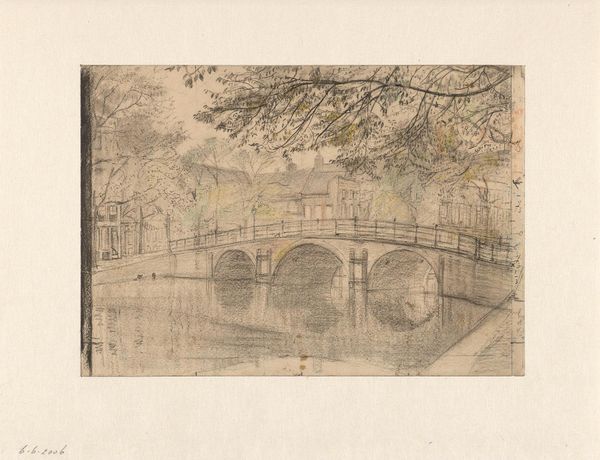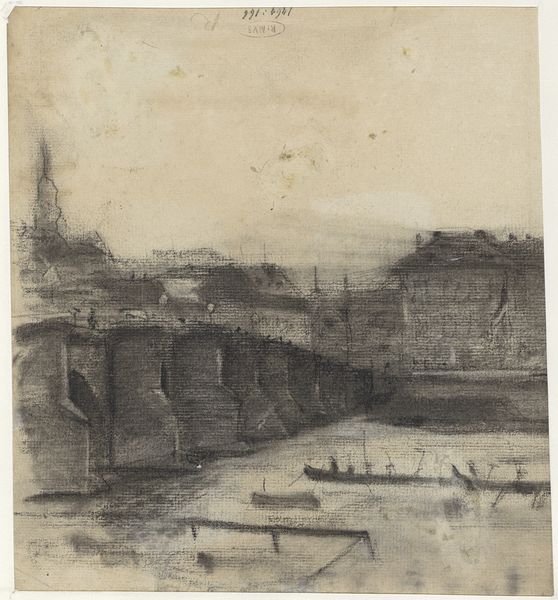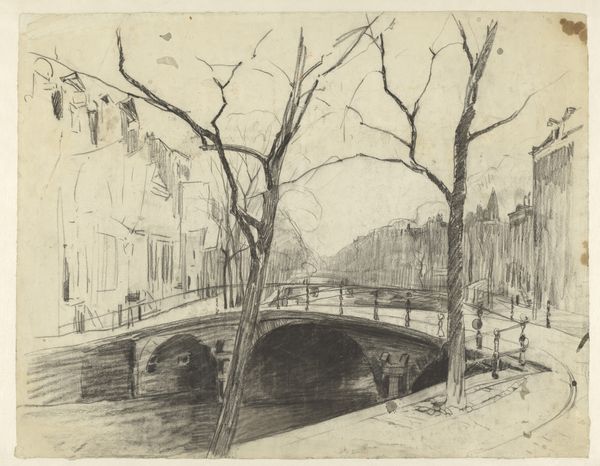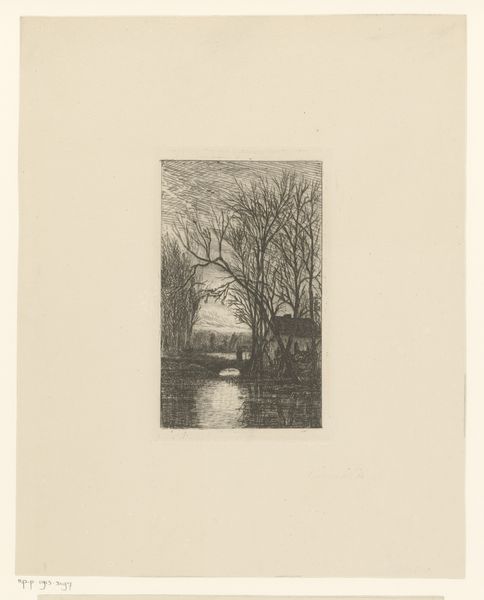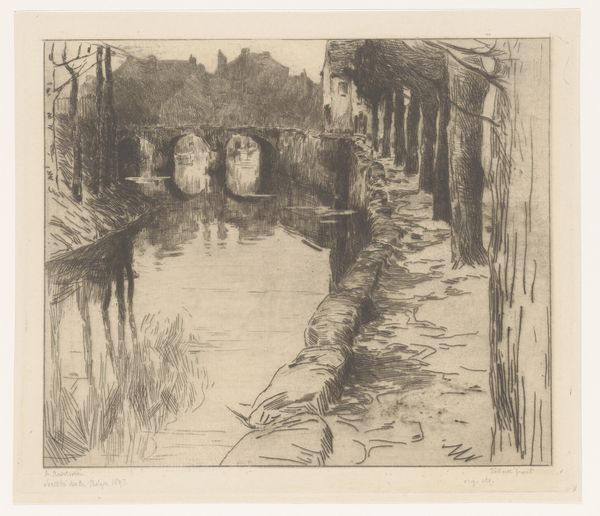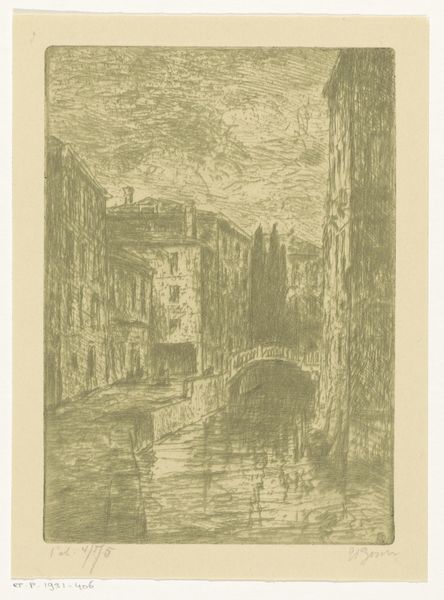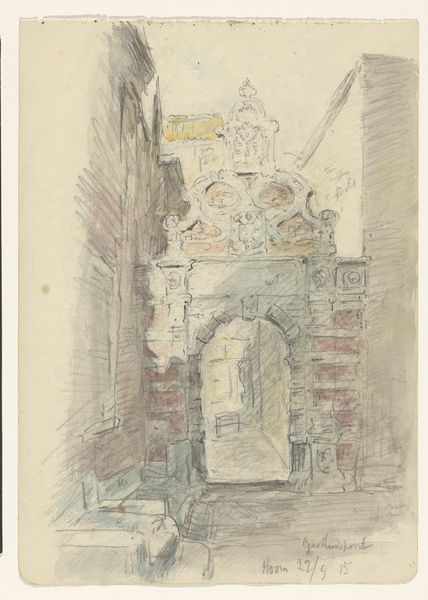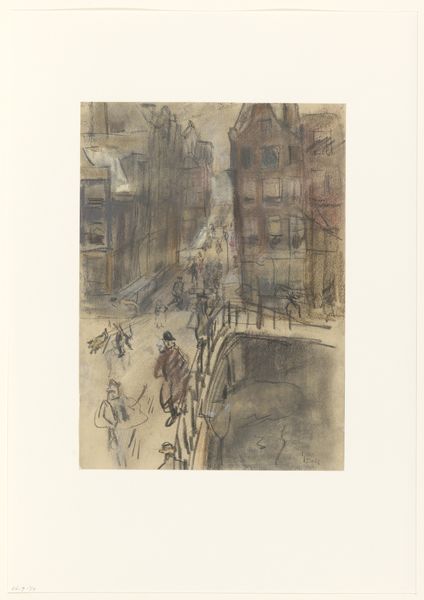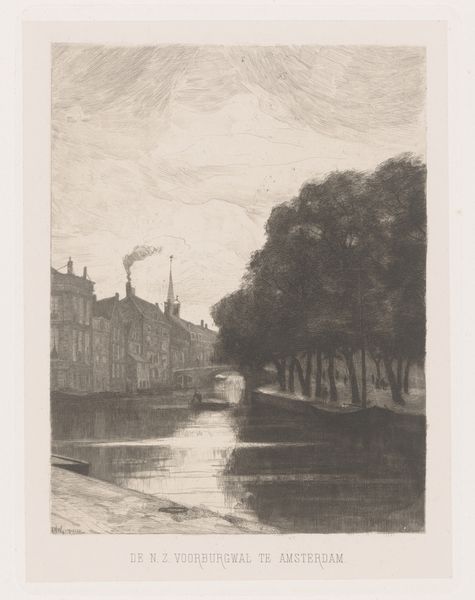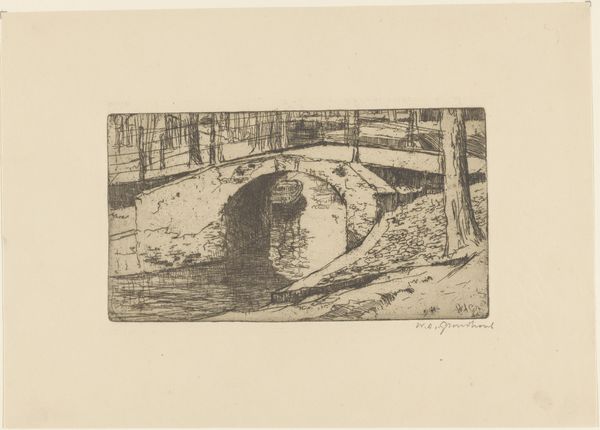
Dimensions: height 387 mm, width 317 mm
Copyright: Rijks Museum: Open Domain
Editor: Here we have Jan Hoynck van Papendrecht’s “De Warmoesgracht,” created in 1894 using watercolor and drawing on paper. I find its muted colors create a rather melancholic atmosphere. What do you make of this scene? Curator: It’s interesting to see this subject captured during that time. Cityscapes were evolving, reflecting not just the architecture but also the lived experiences of people within urban spaces. Do you notice how the artist chose to depict this canal? Editor: Yes, it’s not a romanticized view. The focus seems to be on capturing the everyday, with bare trees and reflections in the water. Curator: Exactly! This Impressionistic approach places it within a specific art-historical context. Think about the rise of urbanization and industrialization. How did artists react to these monumental shifts? Works like this offer us insight into that collective response. Was art merely for beauty, or was it to capture the times, as well? Editor: I see what you mean. So, beyond just depicting a scene, the choice of subject and style becomes a commentary on the period itself? Curator: Precisely. This era was fascinated with capturing the fleeting moments, with capturing modernity’s ever-changing scenery. These canal paintings tell us something about Amsterdam’s public role in the late 19th century. Editor: This really changes how I view it. I was just seeing a nice watercolor, but it's actually so much more! Curator: Indeed! Seeing the artist in their historical moment helps you understand it better.
Comments
No comments
Be the first to comment and join the conversation on the ultimate creative platform.
